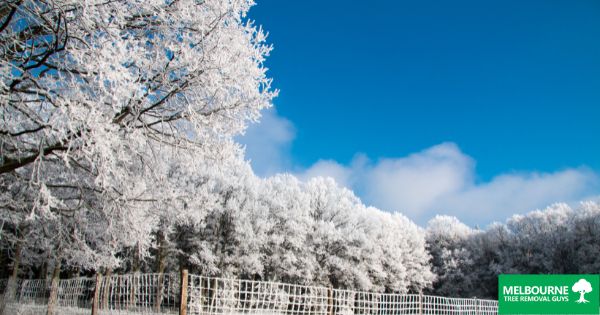Throughout our Australian seasons, trees endure a lot: drought, harsh winds, snow storms, scorching heat, heavy rains, and ice. In the winter, trees can suffer ice damage, which can cause branches and even entire trunks to snap off. If your area has just been hit with an ice storm and the trees on your property are damaged, here is how you can safely care for them.
Keep Yourself Safe
Before you even attempt to save your tree, first assess if it is safe to do so. Many branches get caught on powerlines or they’re left dangling right above them. A large branch can appear properly stuck in the crown, but any breeze can dislodge it. If the tree is close to powerlines, contact a tree removal service as soon as possible to eliminate the danger. If your tree doesn’t pose any safety hazards, we suggest pruning or removing it in the spring.
Is the Tree Worth Saving?
Trees are strong and resilient, but they aren’t immortal. If an ice storm has caused serious damage to the crown, it may be difficult to rescue. Assess the damage to find out how much crown loss or destruction it has suffered. If more than 75% of the crown is broken or damaged, it’ll be extremely difficult to save. If none of the crown is damaged but the weight of the ice has caused it to bend 60 degrees or more, it may also be too late to rescue. However, trees are strong. Their survival depends on many factors, such as their species. If you’re not sure, get a site survey.
When the Ice Sticks Around
Ice doesn’t always melt away after a storm. Sometimes, it sticks around as it continues to weigh down a tree’s branches. For most trees, leaving the ice to thaw on its own is the best way to save your tree from damage. Attempting to remove the ice by chipping away at it will likely cause the already brittle branches to snap. In other words, you might end up causing more damage to the tree than if you left it alone. Patience is key.
Melbourne Tree Removal Guys – All Tree Cutting & Other Services. Tree Removal, Stump Grinding, Stump Removal, Tree Trimming, Tree Mulching, Tree Pruning & Emergency Tree Removal Experts In Melbourne!
Click here to read more articles regarding tree removal & related services.
If you are in Ferntree Gully and looking for Melbourne Tree Removal Guys, below is the best way to visit us.
Melbourne Tree Removal Guys
26 Fleetwood Dr
Narre Warren VIC 3805
https://treeremoval-melbourne.com.au
*Find us on Google Map


Recent Comments